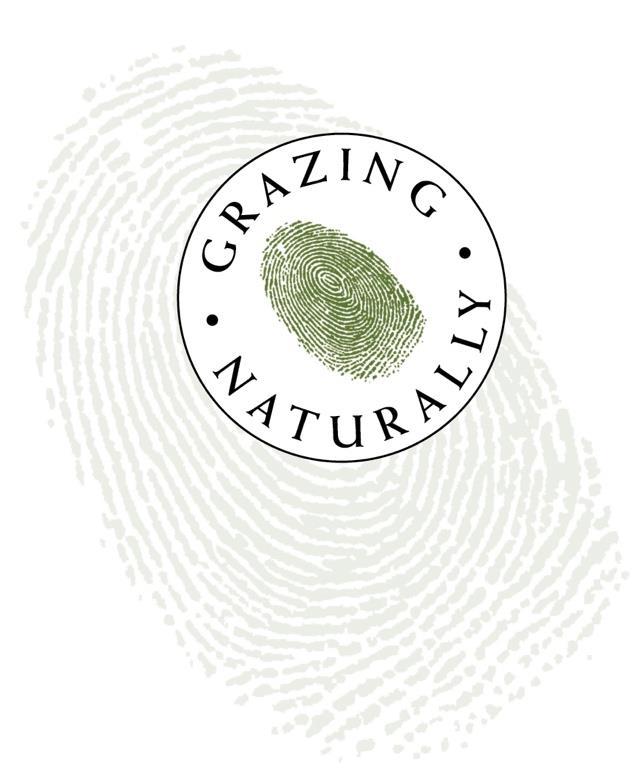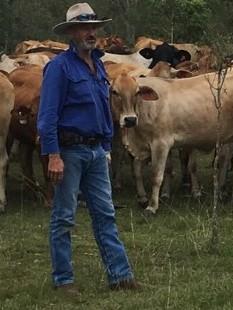Grazing Naturally Tool #1
Forage Assessment
Dick Richardson 2020
Forage Assessment: S.T.A.C. Method (Sole, Toe, Ankle, Calf, Thigh Method)
A NOTE ON FEED BUDGETING

Feed budgeting is part of the grazing planning process and requires a number of steps
1. Assess Feed available by Quantity across the entire property / properties (STACT Method)
2. Adjust Feed Quantity into Quality classes
3. Assess length of time this feed must hold for
4. Calculate Feed requirements for stock numbers by class over required time period
5. Match Stocking Rate to Carrying Capacity
a. By Quantity, Quality and Stock Class
b. Equitably by Mob
6. Plan Grazing Patterns and use for the planning period
a. Allow for animal performance
b. Allow for paddock preparation for the next wet
7. Run the plans and make adjustments to allow for the seasonal reality
STAC method of forage assessment:
1. Look at the area next to the foot the same size as your boot.
2. The forage height you can’t see through of the edible feed averaged across the boot area is equated to Stock Days per hectare.
a. For an individual step stock days per hectare are equal to:
i. Sole ht = 30 SD/ha
ii. Toe ht = 60 SD/ha
iii. Ankle ht = 90 SD/ha
iv. Calf ht = 120 SD/ha
v. Thigh ht = 150 SD/ha
vi. Pocket ht = 180 SD/ha
Boot types:
There are many weird and wonderful boot types around. The STAC method is based around a sole height of between 10 and 20mm
3. Do 10 steps to get a better average and account for plant density, ungrazeable plants, bare patches etc.
a. Be consistent in the pattern you use
b. Take 20 steps only counting every second step to widen your sample area - (being 10 for the same foot).
c. On every footfall for the same foot rate a boot size area alongside of your boot
d. When doing the 10 steps we divide the SD/ha by 10 and add them together to calculate the average SD/ha
i. Each step is now worth (You can use in between numbers to suit)
1. Sole ht = 3
2. Toe ht = 6
3. Ankle ht = 9
4. Calf ht = 12
5. Mid-thigh ht = 15
6. Pocket ht = 18

• The original STAC method only went as far as Calf
• For tropics and tall grasslands Dick has added Mid-Thigh and Pocket
• Each 30 SD is marginally longer than the previous one
e. Add all 10 steps to get a STAC – in SD/ha.
f. Do 2-3 STAC’s per site and do a few representative sites in each paddock and then average them to get a SD/ha STAC for the paddock
4. Calculate SD’s in the paddock
a. Multiply SD/ha by paddock size in ha = SD’s per paddock
5. Finalise your feed assessment for the property
a. Total the SD’s of all the paddocks
6. Make allowances for Quality - make a note for each paddock
a. Estimate a % of the available feed that is
i. High Quality %
ii. Medium Quality %
iii. And a utilize if we are desperate or landscaping a paddock %
7. You have now completed the forage assessment step in creating a feed budget and dry season grazing plan
1. For conversions of SD’s to:
a. LSU: 1 = 1 (Large Stock Units)
b. KgDm: x by 11.25 (Kg Dry Matter available)
c. Dse: x by 9 (Dry Sheep Equivalents)
STAC METHOD for FORAGE ASSESSMENT




History of the STACT Method
• The STAC method was developed in the NE of the USA to assess meadow forage
• Dick was taught this method by an educator, Jim Weaver, from that region in 1998 and had to adapt it for wild grazing and the variation in our natural and arid environments elsewhere
• The STAC method takes into account feed available and leaves behind adequate soil cover for the health of ‘Grazing orientated ecological communities’ without the need for further calculations with regards to residuals, species and other factors.
• It is a simple, easy to use and very reliable method for quick fodder availability assessment that saves time and effort
• If you can do it with a second person it helps make it a more interactive and joyous experience
• The method can be done on horseback or on a bike too
Grazing Naturally team members:
Dick Richardson: mobile 0429 069001; email: dick@grazingnaturally.com.au
Rob Young: mobile: 0427 788818; email: rob@grazingnaturally.com.au
Ian Little: mobile: 0418 907025; email: ian@grazingnaturally.com.au
Grazing Naturally Website: www.grazingnaturally.com.au

